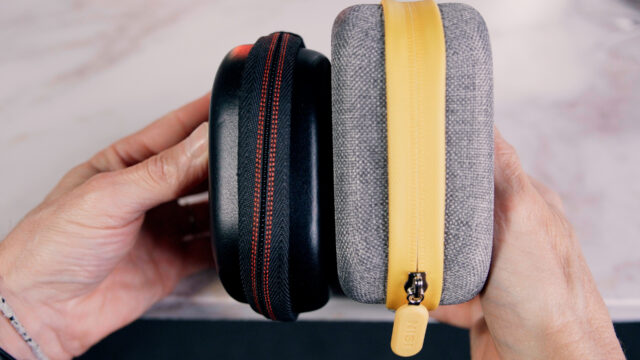NiSi Swift VND Mist Kit Review – A Versatile Variable ND System with Black Mist
Restriction-free music courtesy of Epidemic Sound. Sign up here: Epidemic
Variable ND filters have escorted our production life for years now, and I’m sure that you, just like me, are looking for a system that will satisfy your filming needs. Today I am introducing the NiSi Swift VND Mist Kit -a variable ND system that consists of three elements. The main element is the actual variable ND filter that can reduce exposure by up to 4 stops. Then, there is an add-on ND filter that takes it further by reducing exposure up to 9 stops. But the jewel on the crown is the third element, which is a Black Mist filter. For me, it is a complete run and gun filter system that can help in the field with ever-changing and challenging lighting conditions.
Up until recently, I used a VND magnetic filter set from Freewell (See our review here). The main issue with this solution was the joint Mist and ND on the same glass. In practice, it meant I could not add the Mist filter when conducting indoor interviews since the ND reduces the amount of light entering the camera even further. This is why I was pleased to see a new VND filter system where the Black Mist filter is separated from the ND filters themselves. This gives total freedom in regards to how to use it, be it on the NDs or directly on the lens itself.

Why use a Natural Density filter in front of the lens?
Well, the answer is simple: you want to be able to control the amount of light entering the camera’s sensor. I can hear some of you asking “why is controlling the light entering the camera beneficial?” Well, there are multiple reasons for doing so:
The first reason is to be able to leave the shutter speed, or shutter angle on a certain value decided on, for example, the above video was shot in 25 frames per second, and I want my shutter speed to stay at 50 (in order to keep a certain motion cadence associated with films).
The Secrets of Optics
The second reason is to be able to control ISO settings. For example, the above footage was shot with the FUJIFILM X-H2, in f-log 2, and the recommended ISO by the manufacturer in order to achieve the maximum dynamic range is 1000, which is rather high.

Top this with the willingness of many creators to express themselves by working with fast lenses. And there you have it, we need to have some sort of “sunglasses” on the lens to be able to control light.

Now, some cameras have that ND filter built in, while other filming devices such as mirrorless cameras, don’t have it at all! So bottom line, we have to use some sort of solution, like a matt box or a screw-on lens filter in order to add that missing ND function to be at disposal.
As a documentary filmmaker, a Variable ND filter is my preferred solution option since it allows me to quickly react to changing filming situations in the field, and in this regard, the NiSi Swift Kit is doing a remarkable job.

How to use the NiSi’s filter system
Simply screwing the main variable ND filter unit on your lens, gives you full control over reducing exposure by 4 stops. Let’s say, it’s an extremely bright sunny day and you need even stronger ND filtration, then you’d just attach the 5 to 9 stops add-on filter. It is not magnetic, but I like this solution too. It holds in the field very well!
As I mentioned before, the real jewel of this kit is the Black Mist filter. It can be attached to the variable NDs or completely separately, on the lens itself.
So for example, if you are filming indoors and the amount of light is not sufficient but you still want to use that Black Mist filter, you can do it with this filter.

Why would I care about Black Mist filter?
A Black Mist filter reduces the level of contrast in the picture and adds some halation around light sources. Personally, I like using this type of filter in some productions since it kills the harshness of the “video look”. In other words, it can contribute to achieving a more “film-like” look, depending on the lighting arrangements that you have on set or in the field.


What I like when working with the NiSi Swift VND Mist Kit
- The quality of the filter glass is very good and there is hardly any color shift.
- The “X effect” that is associated with variable ND filters is almost eliminated.
- The exposure range control has hard stops at each end.
- The Black Mist strength is 1/4 which is just about what I personally like. Not too strong and not too weak.
- Adding and removing the filter components is very easy and straightforward.


What Could Have Been Improved
- First, in order to use the black mist only on a lens, you need to use the supplied adapter ring. In case you lost or forgot it, you are simply screwed… I wish that NiSi would have designed the system in a way that the supplied adapter ring is not that crucial.
- Another thing is the included carrying case. It’s simply too big, especially if you are after saving space in your luggage when traveling.
Other than that, it is a very easy filter system to use. Almost like a mix-and-match one.

Conclusion
My feeling is, that the overall picture quality is not being reduced when using this system, so I will not hesitate using it whenever I need to control lighting, or, add an additional aesthetic look to my video. I would love to see NiSi expanding the availability of other filters as well making them even more useful. Last but not least, it would be great if this single adapter ring can be re-designed. On a single occasion, I had to back from my original plan and film with a Black Mist on the lens, simply because of not having that ring with me.
The entire NiSi Swift VND Mist Kit together with the Black Mist filter will set you back $409. Some components of it can be purchased separately, too.
What VND filter system are you using? Do you have experience working with NiSi filters? Please share with us your thoughts in the comment section below.




























